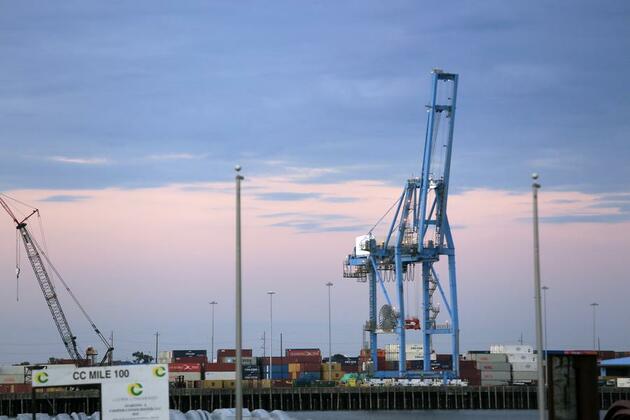Column: Is China to blame for U.S. manufacturing job loss?
Xinhua
26 Jun 2025, 15:45 GMT+10

In reality, China, as the second-largest source of U.S. imports, supplies high-quality, competitively priced goods that have helped fill store shelves, ease inflation and deliver real savings to American consumers.
by Mei Xing
Recently, there has been an argument about the so-called "China shock" being the reason for job losses in the United States. But a more nuanced approach is necessary to explain the contraction of manufacturing jobs in the United States, including the overall economic dynamics in developed countries, automation and a combination of domestic factors.
GLOBAL MANUFACTURING DECLINE
The Groningen Growth and Development Centre in the Netherlands finds that manufacturing employment typically follows an inverse U-shape: it rises during early industrialization but declines as economies advance and consumer demand shifts toward services. This leads to a gradual movement of labor from manufacturing into the service sector. Take the United States itself for example:
In 1950, goods accounted for around 60 percent of American consumption; today they represent just a third of spending and just 10 percent of national jobs.
According to a senior fellow at the American Enterprise Institute (AEI), manufacturing job losses in developed economies began well before China joined the WTO in 2001.
A 2025 JPMorgan analysis also indicates that this structural shift occurred regardless of trade deficits, noting similar drops in countries like Germany and Japan -- both of which consistently ran trade surpluses.
AUTOMATION DRIVES LOSSES
Automation, not trade, has been the main driver of manufacturing job losses in the United States, as pointed out in a recent op-ed by Nobel Laureate James J. Heckman and economics professor at the University of Pennsylvania Hanming Fang.
Research also shows that the adoption of industrial robots in the United States from 1990 to 2007 led to a loss of 360,000 to 670,000 jobs. So, even if the United States completely stops importing from China, many jobs will still be replaced by robots.
A number of solid research pieces also make the same case:
Professors at Ball State University in Indiana pointed out that between 2000 and 2010, only about 13 percent of U.S. manufacturing job losses could be attributed to international trade, with the remaining driven by productivity gains (automation, efficiency and technology improvements).
Recent AEI research suggests that manufacturing job shrinkage has been driven largely by productivity gains rather than offshoring alone: from 2001 to 2024, U.S. manufacturing employment fell by approximately 22 percent, but real manufacturing output increased by about 40-50 percent over the same period.
DOMESTIC JOB PRESSURES
Higher costs of labor: Per capita wages per hour in the United States are six to eight times higher than those of emerging markets.
Tariff hikes can backfire: Although high steel tariffs delivered modest gains to U.S. steelmakers, downstream manufacturing sectors -- such as auto, appliance and machinery industries -- faced much higher costs, leading to significant job losses across those industries.
Domestic, interstate shifts of manufacturing jobs: A study by Middlebury College recently emphasized that manufacturing jobs lost in the Rust Belt in the United States weren't offshored overseas but relocated to Southern states such as Alabama, South Carolina, Georgia and Tennessee. This means that it is unfair to put the blame completely on other countries.
Reluctance to take factory jobs and a lack of skilled labor: According to a 2024 Cato Institute survey, only 25 percent of Americans said they'd personally be better off working in a factory -- even though 80 percent favored more manufacturing jobs nationally.
The Alliance for American Manufacturing reports that by early 2025, around 20.6 percent of U.S. factories were operating below capacity due to labor shortages. Meanwhile, the U.S. Department of Labor noted approximately 381,000 unfilled manufacturing positions in April 2025.
It is therefore both inaccurate and unconstructive to scapegoat China for employment challenges in the United States.
In reality, China, as the second-largest source of U.S. imports, supplies high-quality, competitively priced goods that have helped fill store shelves, ease inflation and deliver real savings to American consumers.
China is also the third-largest market for U.S. exports: roughly 50 percent of American soybean exports, 30 percent of cotton exports, 17 percent of integrated circuit exports, 10 percent of U.S. exports of coal, liquefied petroleum gas and medical equipment go to China -- collectively supporting around 860,000 American jobs.
Editor's note: Mei Xing is an observer of international affairs.
The views expressed in this article are those of the author and do not necessarily reflect the positions of Xinhua News Agency.
 Share
Share
 Tweet
Tweet
 Share
Share
 Flip
Flip
 Email
Email
Watch latest videos
Subscribe and Follow
Get a daily dose of Middle East Star news through our daily email, its complimentary and keeps you fully up to date with world and business news as well.
News RELEASES
Publish news of your business, community or sports group, personnel appointments, major event and more by submitting a news release to Middle East Star.
More InformationInternational Business
SectionBird flu plan in the works as USDA weighs export, vaccine risks
CHICAGO, Illinois: For the first time in history, U.S. officials are considering a coordinated plan to vaccinate poultry against bird...
Farmers exploit loophole in Amazon soy deal to clear rainforest
SANTAREM, Brazil: As Brazil cements its position as the world's top soy exporter, a new wave of deforestation is spreading across the...
Europe eases rates as Fed holds and Trump threatens tariffs
ZURICH, Switzerland: A wave of central banks across Europe surprised markets last week by lowering interest rates, responding to easing...
Carney sets 30-day deadline for US trade deal
OTTAWA, Canada: Canada may boost its counter-tariffs on steel and aluminum imported from the U.S. if a comprehensive trade agreement...
Federal Reserve chief weighs next move as economic outlook wavers
WASHINGTON, D.C.: The U.S. economy is performing reasonably well, but Federal Reserve Chair Jerome Powell faces a difficult decision...
Putin explains what will happen if West robs Russias reserves
Seizing the frozen funds would hasten the shift to regional payment systems, the president has said Any attempt by the West to seize...
International
SectionAlliance eyes major military buildup to counter Russia
THE HAGUE, Netherlands: NATO is pressing ahead with a sweeping new defense spending target, calling on all 32 member nations to commit...
Mamdani leads NYC mayoral race in stunning upset over Cuomo
NEW YORK, U.S.: A political newcomer is on the verge of reshaping New York City politics. Zohran Mamdani, a 33-year-old state assemblyman...
Millions endure dangerous US temperatures, heat alert issued
MADISON, Wisconsin: Tens of millions of residents across the Midwest and East Coast faced dangerously high temperatures over the weekend...
Multiple Israeli troops die as armored personnel carrier is blown up in Gaza
KHAN YOUNIS, Gaza - Seven Israeli soldiers were killed in a large explosion in southern Gaza's Khan Younis area on Tuesday night,...
Khamenei remains in hiding as clerics fast-track succession plans
DUBAI, U.A.E.: Iran's top clerics are quietly accelerating succession plans for Supreme Leader Ayatollah Ali Khamenei, who was threatened...
Monsoon floods batter China, raising climate concerns
BEIJING, China: Extreme weather is once again testing China's resilience, as intensifying monsoon rains trigger floods across major...













